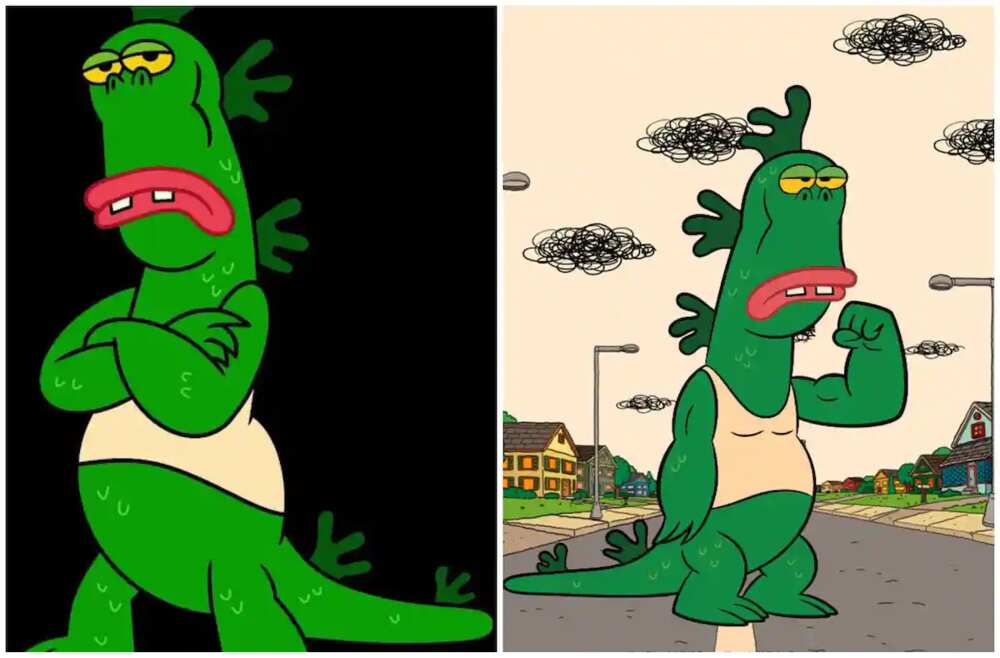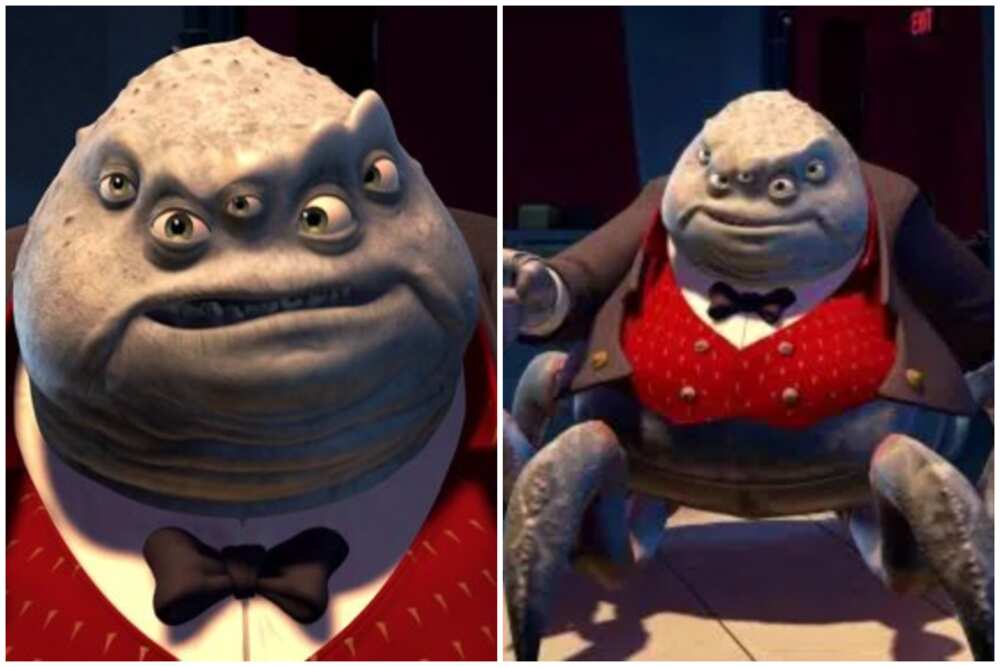Hey there, cartoon enthusiasts! Let’s talk about something that might seem a little unconventional but is definitely worth discussing. You know those skinny ugly cartoon characters that somehow worm their way into our hearts? Yeah, those ones. The ones with the awkward proportions, the exaggerated features, and the quirks that make them unforgettable. Believe it or not, these characters have a special place in the world of animation, and we’re diving deep into why they matter so much.
When we think of cartoons, we often picture bright colors, perfect proportions, and happy-go-lucky vibes. But let’s be real—some of the most iconic characters are the ones that break all the rules. These skinny ugly cartoon characters might not fit the traditional mold of “beautiful,” but they bring something unique to the table. They’re quirky, relatable, and downright hilarious. And honestly, that’s what makes them so lovable.
So, buckle up, because we’re about to explore the world of these quirky characters. We’ll talk about their history, their impact on pop culture, and why they resonate with so many people. By the end of this, you might just find yourself appreciating these oddball cartoons even more than you already do. Let’s get started!
Read also:Virginia Donald A Deep Dive Into Her Life Legacy And Impact
Why Skinny Ugly Cartoon Characters Stick Around
First things first—what makes skinny ugly cartoon characters so memorable? Well, it’s all about personality. These characters often have exaggerated features that make them stand out in a crowd. Think about it: when you watch a cartoon, you’re not looking for perfection. You’re looking for something that catches your eye and sticks in your mind. And let’s be honest, these quirky characters do just that.
Take a look at some of the most beloved cartoons out there. You’ll notice that many of them have characters that don’t exactly fit the “beautiful” mold. Instead, they’re weird, funny, and sometimes downright bizarre. And yet, they’re the ones we remember long after the show ends. Why? Because they’re relatable. They’re human (or at least cartoonishly human). They remind us of ourselves or people we know.
Breaking Stereotypes: The Appeal of the Unconventional
Here’s the thing: skinny ugly cartoon characters challenge our expectations. In a world where beauty standards dominate, these characters remind us that there’s beauty in imperfection. They show us that it’s okay to be different, to stand out, and to embrace our quirks. And let’s be real—that’s a message we all need to hear every once in a while.
These characters also have a way of making us laugh. Their awkwardness, their flaws, and their ridiculousness are what make them so entertaining. They’re not trying to be perfect—they’re just being themselves. And in a world where everyone seems to be chasing perfection, that authenticity is refreshing.
Historical Context: The Evolution of Skinny Ugly Cartoon Characters
Now, let’s take a trip down memory lane. Skinny ugly cartoon characters haven’t always been a thing. In the early days of animation, characters were often designed to be cute and appealing. But as the industry evolved, so did the characters. Animators started experimenting with different styles, and that’s when we started seeing more unconventional designs.
Think about classic cartoons like Looney Tunes or Tom and Jerry. Sure, they had their fair share of “beautiful” characters, but they also had plenty of quirky ones. Characters like Sylvester the Cat or Yosemite Sam were far from traditional, but they were unforgettable. And that’s the beauty of it—these characters proved that you don’t need to be conventionally attractive to be loved.
Read also:Is Corey Mylchreest Gay Unpacking The Truth Behind The Question
The Influence of Modern Animation
Fast forward to today, and skinny ugly cartoon characters are everywhere. Shows like “Adventure Time,” “SpongeBob SquarePants,” and “Rick and Morty” are filled with characters that break the mold. These shows embrace weirdness and celebrate individuality, and that’s why they resonate with so many people.
- Adventure Time: Finn and Jake are far from perfect, but they’re lovable.
- SpongeBob SquarePants: Patrick Star is the epitome of quirky and awkward.
- Rick and Morty: Rick Sanchez is a mess, but he’s also a genius.
These characters remind us that it’s okay to be different. They show us that imperfection is what makes us unique, and that’s something worth celebrating.
Psychological Impact: Why We Love Skinny Ugly Cartoon Characters
So, why do we love skinny ugly cartoon characters so much? It’s not just about their appearance—it’s about the emotions they evoke. These characters have a way of connecting with us on a deeper level. They remind us of our own quirks and imperfections, and that makes them relatable.
Psychologically speaking, we’re drawn to characters that reflect our own experiences. When we see a character who’s awkward, flawed, or just plain weird, we see a little bit of ourselves in them. And that connection is powerful. It’s why we root for these characters, even when they’re making mistakes or getting into trouble.
Building Empathy Through Character Design
Character design plays a huge role in how we perceive skinny ugly cartoon characters. Animators use exaggeration and distortion to create characters that are visually striking. But they also use these techniques to convey emotion. A character’s design can tell us a lot about their personality, their motivations, and their struggles.
For example, a character with oversized ears might be clumsy or awkward. A character with a long nose might be mischievous or sneaky. These design choices aren’t random—they’re carefully crafted to give us insight into the character’s world. And that’s what makes skinny ugly cartoon characters so fascinating.
Cultural Significance: Skinny Ugly Cartoon Characters in Pop Culture
Skinny ugly cartoon characters have had a significant impact on pop culture. They’ve become icons in their own right, influencing everything from fashion to music to art. These characters remind us that it’s okay to be different, and that’s a message that resonates with people all over the world.
Take a look at some of the most popular skinny ugly cartoon characters out there. Characters like Homer Simpson, Shaggy from Scooby-Doo, and Bender from Futurama have become cultural icons. They’re not perfect, but they’re beloved. And that’s because they represent something universal—the idea that it’s okay to be yourself, no matter how weird or quirky you might be.
The Role of Skinny Ugly Cartoon Characters in Social Commentary
Many skinny ugly cartoon characters are used as vehicles for social commentary. They tackle issues like body image, self-acceptance, and diversity in ways that are both entertaining and thought-provoking. Shows like “BoJack Horseman” and “The Simpsons” use these characters to explore complex themes, and that’s why they’re so impactful.
These characters remind us that cartoons aren’t just for kids—they’re for everyone. They have the power to make us laugh, cry, and think. And that’s what makes them so special.
Biography: Meet Some Iconic Skinny Ugly Cartoon Characters
Let’s take a moment to meet some of the most iconic skinny ugly cartoon characters out there. These characters have left a lasting impression on pop culture, and they’re worth getting to know.
| Name | Show | Notable Traits |
|---|---|---|
| Homer Simpson | The Simpsons | Overweight, lazy, but lovable |
| Shaggy | Scooby-Doo | Scaredy-cat, loves food |
| Bender | Futurama | Drunk, sarcastic, loves beer |
These characters might not fit the traditional mold of beauty, but they’re some of the most beloved in the world of animation. And that’s because they’re real—they’re flawed, they’re quirky, and they’re endlessly entertaining.
What Makes These Characters Iconic?
So, what is it about these skinny ugly cartoon characters that makes them so iconic? It’s their ability to connect with us on a personal level. They’re not perfect, but they’re relatable. They remind us that it’s okay to be different, and that’s a message that resonates with people all over the world.
These characters also have a way of making us laugh. Their quirks, their flaws, and their ridiculousness are what make them so entertaining. And in a world where we’re constantly bombarded with perfection, that authenticity is refreshing.
Design Techniques: How Skinny Ugly Cartoon Characters Are Created
Creating skinny ugly cartoon characters is both an art and a science. Animators use a variety of techniques to design characters that are visually striking and emotionally engaging. From exaggerated proportions to distorted features, these characters are crafted to stand out.
One of the most important aspects of character design is exaggeration. By exaggerating certain features, animators can convey personality, emotion, and even backstory. For example, a character with oversized eyes might be curious or adventurous. A character with a long nose might be sneaky or mischievous. These design choices aren’t random—they’re carefully thought out to create a specific impression.
The Importance of Personality in Character Design
Personality is key when it comes to skinny ugly cartoon characters. A character’s appearance should reflect their personality, motivations, and struggles. That’s why animators spend so much time perfecting every detail. From the shape of a character’s nose to the color of their hair, every choice is made with purpose.
And let’s not forget about animation. The way a character moves can tell us a lot about who they are. A clumsy character might trip over their own feet, while a mischievous character might have a sly grin and a sneaky walk. These small details add depth to the character and make them more engaging.
Challenges in Creating Skinny Ugly Cartoon Characters
Of course, creating skinny ugly cartoon characters isn’t without its challenges. Animators have to strike a delicate balance between making a character quirky and making them relatable. If a character is too weird, they might alienate viewers. But if they’re too normal, they might blend into the background.
There’s also the challenge of making these characters likable. Just because a character is quirky or unconventional doesn’t mean they’ll automatically be loved. Animators have to find ways to make these characters relatable, funny, and engaging. And that’s no easy feat.
The Importance of Storytelling
Storytelling plays a huge role in making skinny ugly cartoon characters successful. A character’s design is only part of the equation—their story is what makes them truly memorable. Animators use storytelling to give these characters depth, personality, and purpose. And that’s what makes them so special.
When a character has a compelling backstory, we’re more likely to care about them. We want to see them succeed, even if they’re flawed or quirky. And that’s the magic of animation—characters don’t have to be perfect to be loved.
Conclusion: Celebrating Skinny Ugly Cartoon Characters
So, there you have it—a deep dive into the world of skinny ugly cartoon characters. These quirky, unconventional characters have a special place in the world of animation, and they remind us that it’s okay to be different. They challenge our expectations, make us laugh, and remind us that imperfection is what makes us unique.
As we’ve explored, skinny ugly cartoon characters have had a significant impact on pop culture. They’ve influenced everything from fashion to music to art, and they continue to resonate with people all over the world. And that’s because they’re authentic—they’re real, they’re quirky, and they’re endlessly entertaining.
So, the next time you watch a cartoon, take a moment to appreciate the quirky characters. They might not fit the traditional mold of beauty, but they’re some of the most beloved characters out there. And that’s because they remind us that it’s okay to be yourself, no matter how weird or quirky you might be.
Call to Action
What’s your favorite skinny ugly cartoon character? Let us know in the comments below! And if you enjoyed this article, don’t forget to share it with your friends. Who knows—you might just discover a new favorite character along the way!
Table


